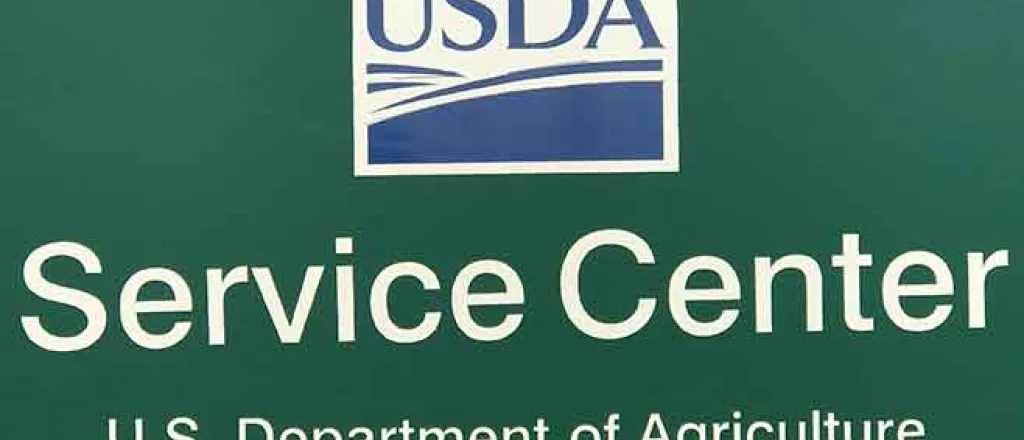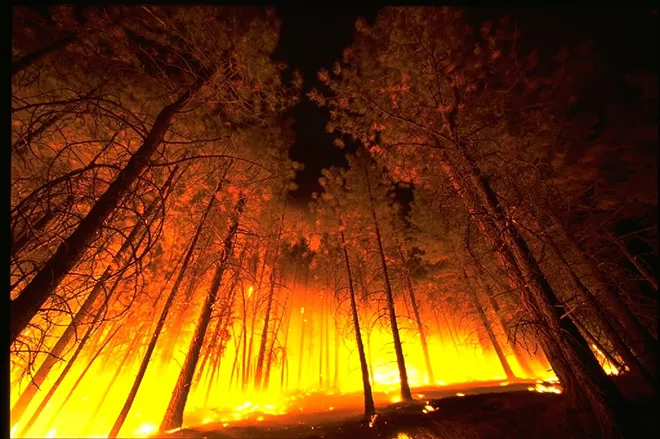
USDA Update – September 22, 2020
IMPORTANT DATES TO REMEMBER:
- CRP EMERGENCY GRAZING and HAYING – 30-DAY NO GRAZING HAS BEEN WAIVED FOR 2020. FSA OFFICES CAN ACCEPT NEW REQUESTS FOR HAYING AND GRAZING UNTIL DECEMBER 31, 2020
- CFAP2 SIGNUP - DEADLINE DECEMBER 11, 2020 – Call and schedule your appointment.
- 2020 PLC YIELD UPDATE – Deadline September 30, 2020
- LFP – Kiowa pays 5 month. Signup ends January 30, 2021
Disclaimer: Information in this UPDATE is pertinent to Kiowa County FSA only. Producers reading this and that do not have FSA interest in Kiowa County are advised to contact their local FSA Office.
CFAP 2
Producer webinar for CFAP 2 on Thursday, September 24 @ 1:00 MST - register at www.Farmers.gov/cfap
USDA announced the CFAP 2 program on Thursday, September 17 and the FSA Offices were notified on Friday, September 18. Employees have attended online training for the program; however all FSA offices have many program deadlines that need to be met by September 30 and the October payment cycle for 2019 ARCPLC and CRP is right around the corner. We realize that producers want to apply ASAP, so that the funds can be issued, however we have some deadlines that we must meet before we dive into CFAP 2. This office will begin scheduling phone appointments for producers beginning Monday, October 5. Producers can call or email the office to schedule an appointment. Livestock producers will need to read the information below pertaining to eligible livestock as the same numbers that were eligible for CFAP 1 will not be eligible for CFAP 2. The 2020 crop and yield information and will autofill when FSA completes the application.
Below is the information regarding CFAP 2 program that was a press release. We encourage producers to visit Farmers.gov website as there is some great information available.
I have bolded a few words in the news release and explanation of why is below -
all classes of wheat - for CFAP, only production of 2019 durum wheat was eligible, with CFAP 2 planted acres for 2020 for all classes of wheat are eligible.
Prevented planted acres are not eligible on any 2020 crop.
Breeding stock for hogs, cattle and sheep are INELIGIBLE for CFAP 2. - Definition from CFAP handbook - breeding stock is defined as the following and therefore NOT ELIGIBLE:
- Cattle - cows and bulls
- Pigs – boars and sows
- Lambs - rams and ewes
Price Trigger Commodities - the acre and yield information will automatically autofill from FSA’s database which will make submitting a completed signed application not possible.
President Donald J. Trump and U.S. Secretary of Agriculture Sonny Perdue have announced up to an additional $14 billion for agricultural producers who continue to face market disruptions and associated costs because of COVID-19. Signup for the Coronavirus Food Assistance Program (CFAP 2) will begin September 21 and run through December 11, 2020.
“America’s agriculture communities are resilient, but still face many challenges due to the COVID-19 pandemic. President Trump is once again demonstrating his commitment to ensure America’s farmers and ranchers remain in business to produce the food, fuel, and fiber America needs to thrive,” said Secretary Perdue. “We listened to feedback received from farmers, ranchers and agricultural organizations about the impact of the pandemic on our nations’ farms and ranches, and we developed a program to better meet the needs of those impacted.”
Background:
The U.S. Department of Agriculture (USDA) will use funds being made available from the Commodity Credit Corporation (CCC) Charter Act and CARES Act to support row crops, livestock, specialty crops, dairy, aquaculture and many additional commodities. USDA has incorporated improvements in CFAP 2 based from stakeholder engagement and public feedback to better meet the needs of impacted farmers and ranchers.
Producers can apply for CFAP 2 at USDA’s Farm Service Agency (FSA) county offices. This program provides financial assistance that gives producers the ability to absorb increased marketing costs associated with the COVID-19 pandemic. Producers will be compensated for ongoing market disruptions and assisted with the associated marketing costs.
CFAP 2 payments will be made for three categories of commodities –
- Price Trigger Commodities
- Flat-rate Crops
- Sales Commodities.
Price Trigger Commodities
Price trigger commodities are major commodities that meet a minimum 5-percent price decline over a specified period of time. Eligible price trigger crops include barley, corn, sorghum, soybeans, sunflowers, and all classes of wheat. Payments will be based on producer’s share of 2020 planted acres of the crop, excluding prevented planting and experimental acres. Payments for price trigger crops will be the greater of:
1) the eligible acres multiplied by a payment rate of $15 per acre; or
2) the eligible acres multiplied by a nationwide crop marketing percentage, multiplied by a crop-specific payment rate, and then by the producer’s weighted 2020 Actual Production History (APH) approved yield. If the APH is not available, 85 percent of the 2019 Agriculture Risk Coverage-County Option (ARC-CO) benchmark yield for that crop will be used.
Eligible beef cattle, hogs and pigs, and lambs and sheep payments will be based on the maximum owned inventory of eligible livestock, excluding breeding stock, on a date selected by the producer, between Apr. 16, 2020, and Aug. 31, 2020. Definition of breeding stock is cows and bulls. Bred and unbred heifers are eligible.
Flat-rate Crops
Crops that either do not meet the 5-percent price decline trigger or do not have data available to calculate a price change will have payments calculated based on eligible 2020 acres multiplied by $15 per acre. These crops include alfalfa, oats, hemp, millet, triticale.
Sales Commodities
Sales commodities include specialty crops; aquaculture; nursery crops and floriculture; other commodities not included in the price trigger and flat-rate categories, including tobacco; goat milk; mink (including pelts); mohair; wool; and other livestock (excluding breeding stock) not included under the price trigger category that were grown for food, fiber, fur, or feathers. Payment calculations will use a sales-based approach, where producers are paid based on five payment gradations associated with their 2019 sales.
Additional commodities are eligible in CFAP 2 that weren’t eligible in the first iteration of the program. If your agricultural operation has been impacted by the pandemic since April 2020, we encourage you to apply for CFAP 2. A complete list of eligible commodities, payment rates and calculations can be found on farmers.gov/cfap.
Applying for Assistance
Producers can apply for assistance beginning September 21, 2020. Applications will be accepted through Dec. 11, 2020.
Additional information and application forms can be found at farmers.gov/cfap. Documentation to support the producer’s application and certification may be requested. All other eligibility forms, such as those related to adjusted gross income and payment information, can be downloaded from farmers.gov/cfap/apply. For existing FSA customers, including those who participated in CFAP 1, many documents are likely already on file. Producers should check with FSA county office to see if any of the forms need to be updated.
LIVESTOCK FORAGE PROGRAM (LFP)
Kiowa County has been rated as a D4 (severe drought) on the U.S. Drought Monitor for 4 weeks which triggered the 5 month of payment; which is the maximum months that can be issued for 2020 approved LFP applications. Those payments were released to the majority of eligible producers on Monday, September 21.
There may a few producers who do not receive this payment due to the fact that LFP payments to an eligible livestock producer in a calendar year for grazing losses because of a qualifying drought must not exceed a factor of 5 monthly payments for the same livestock.
Example: A producer has 100 head of cows and bulls and grazes in both Kiowa and Cheyenne counties. Maximum payment allowed is computed as follows:
100 x 31.89 per head x 5 month x 60% payment factor = $9567.00 – maximum payment allowed.
The producer applies for LFP in both counties and will be limited to the above amount. In some cases this payment Kiowa County is issuing on the 5th month will be reduced or not issued to ensure that the maximum payment allowed is not exceeded.
CRP EMERGENCY HAYING and GRAZING
Below is a repeat of last week’s information regarding the information received on Emergency haying and grazing - that the 30 day layout requirement has been waived. The majority of producers who are currently grazing CRP acres should be completed grazing those acres by September 30th unless you have an approval letter that states otherwise. Producers who are going to continue to graze CRP past September 30 - will need to contact the FSA office to update the conservation plan. Requests to graze CRP acres can be accepted through December 31, 2020.
The office received notification Monday, September 14; that the requirement to remove cattle for 30 days prior to the 1st frost date has been waived for calendar year 2020. Therefore, producers who have made requests to graze CRP after October 24 can begin grazing prior to that date; once they receive notification that the request has been approved. Producers who are currently grazing CRP – are not required to remove the livestock for the 30 days, however if at any time the existing cover cannot support continued grazing the livestock must be removed.
Grazing duration cannot exceed 90 days in a calendar year. The CRP acreage may be grazed at 100 percent of the stocking rate. Emergency grazing is not limited and does not require 25% to be left ungrazed after primary nesting season. NRCS may determine contract specific stocking rates and grazing duration based on the condition of the cover.
Emergency grazing must be completed by the earlier of the following:
- grazing date established by NRCS
- Existing cover reaches minimum grazing height
- Drought conditions improve and grazing is no longer authorized
- December 31, 2020
Emergency haying cannot exceed 60 days in a calendar year and the hay must be removed within 15 days of being baled. Haying must be completed by December 31, 2020. In Kiowa county, producers can only hay 50% of the contract acreage. If NRCS determines that the acreage cannot support haying – the request will be denied.
Emergency haying must be completed by the earlier of the following:
- 60 days
- Drought conditions improve; or
- December 31, 2020
There are many questions pertaining to Emergency haying and grazing that are unanswered; but once we receive answers, we’ll be getting that information out to producers. But the requirement to remove the livestock for 30 days - is no longer a requirement.
MAINTAINING EXISTING CRP COVER
Reminder to CRP producers, it is your responsibility to determine if the permanent cover can continue to sustain the grazing livestock; with the continued drought conditions the permanent cover may not justify continued grazing. When producers submitted the request to graze CRP, the grazing plan that was sent to both the grazing producer and the CRP producer is only a tool for stocking rates.
There is a statement on the grazing plan which is below and needs to be adhered to.
The stocking rate computed is based on estimated available forage. The number of head and days grazed can be adjusted (increased/decreased) as long as the desired outcome is achieved, and the vegetative cover is maintained. If the number of head is increased, then the days grazed should decrease. It is the responsibility of the producer to adjust the stocking rate (#head or days grazed) and ensure livestock are removed in a timely manner.
If the CRP producer determines that grazing must cease as the existing cover cannot sustain continued grazing; the producer grazing must remove the livestock. Don’t jeopardize compliance of your CRP contract. All compliance issues are handled by the FSA County Committee and will involve payment reductions to the annual rental payment.

















